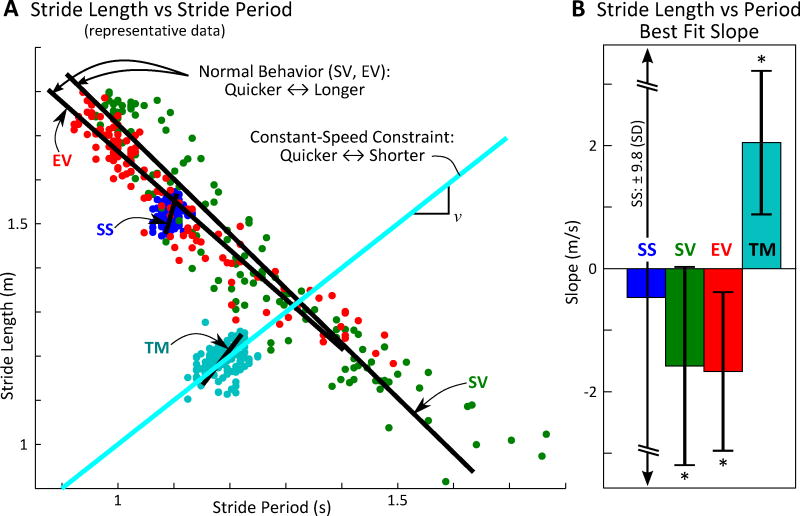Figure 6.
(A) Representative data for stride length, plotted against stride period, with total-least-squares best fits. Self-varied (SV) and externally-varied (EV) conditions stretched across a range of speeds, so the slope is negative as expected from the preferred stride length vs. speed relationship (Eq. 1, Fig. 4). Treadmill (TM) exhibited a significantly positive slope, as predicted by the constant-speed constraint (slope should equal walking speed v). In self-selected (SS) walking, variations were essentially uncorrelated. (B) Slope of the best-fit line in each condition (total least squares, mean ± SD across subjects). The constant-speed constraint in TM causes behavior qualitatively different from normal. * Statistically different from zero, P < 0.001.

